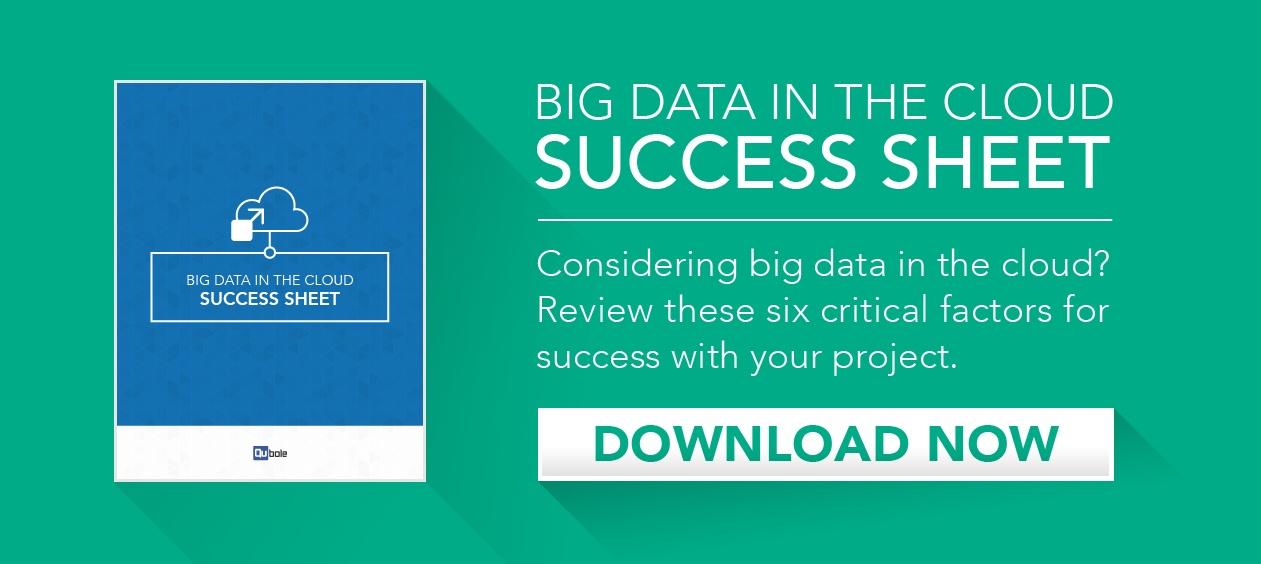
Most organizations have grand visions when it comes to using big data. Needless to say, there’s been a lot of hype surrounding big data analytics, with a lot of emphasis placed on businesses starting their own big data projects. Perhaps your company is interested in a big data project or has already started one. While the results of such projects are a worthy goal to strive for, far too often, organizations fail in the journey. Big data project failure remains a common challenge for almost every business out there. One of the key factors that have caused organizations to stumble in their efforts is poor data management. You may have the latest tools and technology at your disposal, but if you handle the data poorly, your chances of project success decline dramatically.
Data Chaos
Many experts have seen poor data management doom big data projects on a regular basis. One recent report from TechVision research indicates that many organizations don’t even have the fundamentals of data down, let alone some of the more advanced techniques businesses would like to practice. The report describes this lack of proper management as “data chaos”, wherein organizations spend much of their time trying to fix what is broken and losing out on valuable time and productivity in the process. The result is big data project failure, an obvious outcome given the management mistakes organizations unwittingly invite. Without fundamental management practices, businesses have little hope of truly mastering big data and finding success at multiple levels of data usage.
Data Quality
The problems with poor data management come in many colors. One common problem is poor data quality. Organizations gather data from various sources, and some of that data will sometimes be of a lower quality than others. It’s up to companies to manage that data in such a way that poor data is thrown out or improved, and yet bad management practices don’t always result in this happening. Poor data quality can come from data that is old, redundant, inaccurate, missing, misused, and more. For example, companies using customer data they collected years ago may quickly find that information is no longer accurate enough. Removing the old data and replacing it with customer information reflective of the current audience, usually data that was recently collected through clickstream data or sentiment analysis, will lead to higher quality data.
Data Relevance
Businesses also need to work with the relevant data for their chosen project. With all the types of data out there, many organizations are tempted to collect as much information as possible and work from there. A project best suited toward analyzing structured data, for example, would be wasting much of its time trying to apply unstructured data sets. However, a different data project that fully ignores structured data might be missing out on some valuable insights. It all comes down to knowing what data is relevant and optimizing its use. Financial companies, for instance, are much better suited to analyzing structured data through financial models and risk analyses. Attempts to incorporate unstructured data sets in this case would only confuse the models the business is trying to create. On the other hand, a website employing an image search feature would need to focus on unstructured data rather than the structured and easier to define variety.
Cohesion
Big data projects involve many moving pieces, all revolving around data, but in the case of poor data management, those pieces are often misunderstood and poorly applied. These processes — from gathering data to analysis to application — all need to work together as a cohesive unit. If an organization’s data management practices lead to excellent data collection but subpar data analysis, the data project will still end up failing. Every stage of the project needs effective management, and ignoring any step will not get the desired results.
So how can you tell if you and your organization are engaged in poor data management? There are some warning signs you’ll want to be aware of, much of it relating to how much time you do certain tasks. If the majority of your time is spent looking for missing pieces of data or correcting data you discover is inaccurate, mismanagement of that data likely happened somewhere along the line. This again could happen from older sets of data or data sets that seem to contradict each other, such as equipment performance reports. The data from equipment sensors may conflict with that of human management observations. Organizations may then spend an inordinate amount of time trying to rectify the discrepancy rather than determining the more accurate way to measure the data. If you’re spending much of your budget on IT and the latest technology but not on the data itself, that’s another sign you’re practicing poor data management.
There is, of course, a need for good architecture and big data tools to get the job done, but if new tools are accompanied by poor data management, the result will be the same: failure for your big data project. Getting the basics of data management down is a crucial aspect that allows you to expand your organization’s capabilities. Suddenly, you’ll be able to engage in machine learning and predictive analytics, effectively allowing you to get more out of your data. It all starts with managing your data well.




